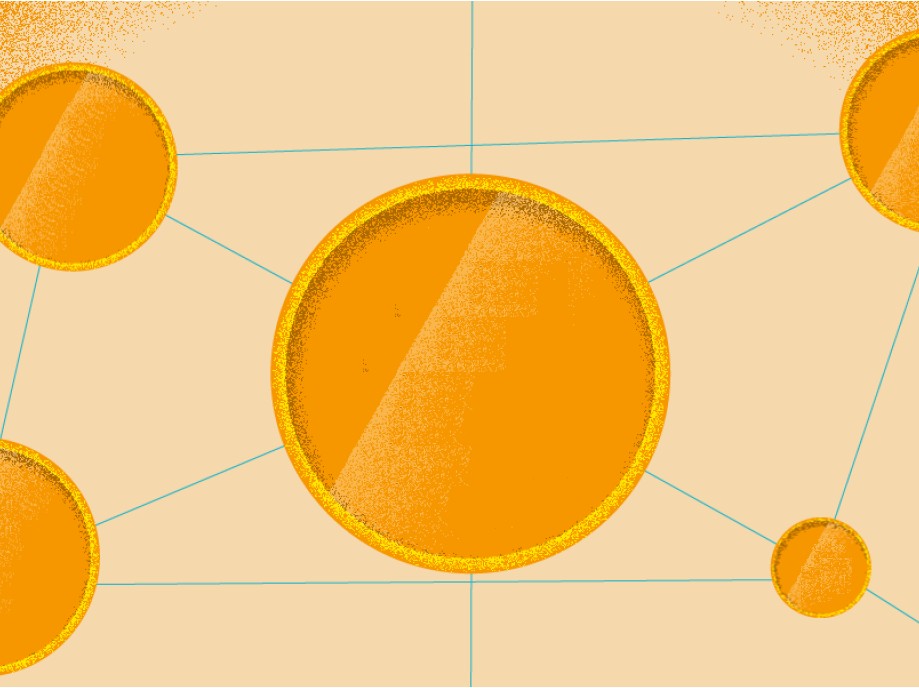Industry 4.0 is still clouded for many people, and the technological capacities that are already being developed are far from the great audience.
The fourth industrial revolution promises to change much of what we know and make the proper use of the “disruptive” adjective, which is closely linked to it.
The technology developed by IOTA Foundation already fulfills this role.
IOTA is the third generation of Blockchain, but it’s not only a cryptocurrency.
With this technology’s progress, we can go from a B2B transaction logic to a Machine to Machine (M2M) one.
Communication between machines and the evolution of microtransactions contributes directly to the collaborative economy, says Rafael Presa, IOTA Foundation’s Market Developer.
In this exclusive interview given to one of our Portuguese blogs, the Inteligência Corporativa, Rafael talks about the Foundation’s Content Marketing strategies to address such a complex subject and gives an encouraging insight about IOTA’s possibilities.
Check it out!
IOTA is much more than a cryptocurrency, but this is the first definition that shows up when we look it up. How does the IOTA Foundation’s Content Marketing strategy deal with this type of reduction in technology?
IOTA Foundation is a German foundation that has developed the third generation of Blockchain. We understand Blockchain as a DLT, that is, Distributed Ledger Technology.
The most famous Blockchain today is Bitcoin’s, which we have heard so much about.
Bitcoin is mostly structured as a financial transaction; it is a financial asset.
You don’t have a great deal of flexibility with applications in segments other than the financial with Bitcoin, and consequently, other cryptocurrencies.
IOTA’s big difference is that, since it is Blockchain’s third generation, we have a few parameters that apply better in other verticals and not only in the financial market.
IOTA has its cryptocurrency that runs under the DLT platform, called Tangle, which allows us to act very specifically or primarily in the Internet of Things use.
For example, the conventional Blockchain, which we recognize from Bitcoin, has a global capacity to process 7 transactions per second on average. As a comparison, VISA, the credit card operator, has a capacity of 20,000 transactions per second around the world.
It is a huge discrepancy for us to be able to make Bitcoin a global currency.
This is different from IOTA because we have a scalable transaction capacity.

How does this scalable transaction capacity work?
In order not to get too much into technicalities, what I can say is that the more operators, the more transactions we have on the Tangle network, the faster it will get.
This is a mathematical concept developed by the Russian professor Serguei Popov.
He holds a doctorate from the University of Moscow but has been teaching in Brazil at Unicamp for 10 years. Before that, he taught at USP, also a Brazilian university, in the Applied Mathematics field.
He developed this mathematical concept behind Tangle and provided its application in the Internet of Things segment.
By 2025, Gartner estimates that we will have 100 billion devices connected to the internet through the Internet of Things.
Imagine all these connected machines transacting, whether values or data, in a network with a low TPS (transactions per second), such as Bitcoin’s Blockchain.
IOTA came up against that. As subproducts, or as a consequence of this IOTA architecture, what happens is that we have a real-life application. We provide support to a machine-to-machine economy.
Now we can have machines with their own identities, decentralized, transacting services or products among themselves, also supporting, for example, a shared economy.
In this scenario, we can open several types of services or products and work on sales through microtransactions, as in the case of IOTA. All of this allows us to provide a service.
The cost to operate a process with microtransactions, which are often less than 1 cent, is not financially viable with fiduciary currencies such as Real, Dollar, or credit card operators.
Could you give us a practical example of how IOTA would work in a microtransaction?
Imagine that I have a factory and I need a welding machine. What is the current process? I need to go to the welding machine supplier and buy that equipment.
If I don’t have money, I go to the bank, borrow some money, and buy that machine, which purpose is to weld. This is the current scenario.
In a scenario with technology like IOTA, we use a sort of consignment with the machine supplier. They give me the tool. I put it in my industrial park and pay as I use it.
Thus, the economy becomes distributed, decentralized.
This is what we call Machine as a Service. I pay according to the use, which is no longer the situation where I raise capital to have that machine.
As this machine goes on welding, we can program it to pay the supplier company for every 1 cm or 1 mm, whatever, of welding.
As it welds, payment occurs because it is doing a service for me.
In the current context, with methodologies and service companies on the market, making this happen is not possible. Charging every inch or millimeter of the weld is an unviable process.
Technologies like IOTA’s provide total ownership versus use scenario.
As a result, there are a series of developments that even lead to sustainability benefits since we need to produce fewer assets because we share products.
For example, we leave a car stopped between 92% to 96% of the time. Imagine if each one of us has to buy a car to be able to move. We would have a higher need for production, and that would consume our natural resources.
From the moment we use the time when the car would be stopped with other people using it, we also reduce the need for natural resources, among many other factors.
One of your roles in the Foundation is to promote the adoption of IOTA by people, groups, and companies. How does the communication for each of these sectors work, since they have different demands?
The communication has to be done on a global level and not only in with partners and industrial segments.
There is also communication for developers and investors. There is a big share of these stakeholders interested in IOTA working in assets, trading, and investing in the currency. We have to diversify our communication with each one of those niches.
Today, we operate more strongly on social media. We are on Twitter and LinkedIn, and these networks are the first impact source of communication.
After that moment, another type of communication that we develop is more focused on who is really interested. This is done by Discord, a direct communication channel that even includes members of the IOTA Foundation.
We have Discord open, and it has several fronts: technology, research, development, and application of use cases. In this space, we usually engage more in conversations.
Another bridge that has been built in Brazil are events. There are events in the DLT segment itself, in which we present our platform, but there are also niche events.
Another interesting aspect is Content Marketing because, as we sometimes serve on several industrial fronts, we need to create relevant content to attract the interest of these participants.
Thus, they understand that they can use IOTA technology regardless of whether the financial asset is cryptocurrency.
You first worked as an ambassador at the IOTA Foundation and are now a Market Developer. How did the structuring process of Content Marketing go when you started playing this last role?
Our marketing work focuses first on understanding a bit more about the history of people that arrive at the Foundation and what vision they have regarding our subjects.
Simultaneously, as we develop materials for Content Marketing, we also elaborate invitations for interested companies. This material can be, for example, a blogpost promoted in social media.
In these invitations, we explain and talk a little more about technology but not directed to technicalities.
We bring information that focuses on the high level of benefits that this type of application can bring. We also highlight the advantages that the digital platform brings to the business of these stakeholders.
From there, we evolve in the conversation, and more technical details enter in a second moment. We also work with videos within our communication department.
We have a super-competent team in the work of creating videos for all this communication with the community.
Do you believe that one of the ways to overcome the challenge of working with such a complex subject is to create a relationship through Content Marketing?
No doubt. I face it a lot when I go to give lectures or classes on technology. It is usually something that people have not had contact with yet. Everything is still too abstract for them.
Our mindset, in general, is still located in Industry 3.0 or even Industry 2.0.
When we start to deal with disruptive technologies, it is more complex to get straight to the point and create a dynamic so that people understand the concept.
It is necessary to set up a ladder for this person to climb the steps and arrive at a more global understanding of technology.
Initially, the idea is to present something innovative, as in digital platforms, but which is already part of many people’s daily lives.
Several people use Airbnb, Uber, and other platforms that bring this innovation. This is a bait for the individual to begin to understand IOTA.
After presenting the benefits to the person in this more everyday language, we go into more specific points about the technology that they will eventually need to know to be part of this ecosystem.
From there, they are prepared for any discussion and also to participate in events that dive deeper into the topic.
For all this to happen, the gateway is Content Marketing.
In the communication team, we have specialists in social media, public relations, and specialists in creativity and art.
These specialized people develop and act in their respective fields, including analyzing the best way to interact with specific audiences.
On the Foundation’s website, there are several articles published by the founder of the technology. How do you see this approach between the academic world and Content Marketing, since these world’s don’t often come together?
This is an interesting question to be analyzed because, usually, the academy is more willing to access more academic articles, and Content Marketing often does not reach this audience.
I am totally in favor of creating an integration between these two parties, especially in Brazil, since there are already initiatives like that abroad.
What happens today is the academy occurring on one side and the technology application in the market occurring on the other.
In other countries, companies themselves invest in research within the academy to bring solutions to them. The path I see is to increasingly integrate these spaces through public or private initiatives — integrate the academy and the market.
I believe that it can bring a greater engagement of the academic segment in reading content about the application of that technology in the market. Also, people in the market could have more adherence to academic material.
How does the IOTA Foundation position itself regarding this issue?
We have an initiative focused on the digitization of Industry 4.0, which is when Business to Business (B2B) tends to become a Machine to Machine (M2M) — where the machines themselves will interrelate, negotiate, and commercialize services and goods.
In this context, the IOTA Foundation, as a non-profit foundation, has an interest in fostering an ecosystem for this development, so that we can all evolve in it.
We are in an invitation moment, inviting associations and institutions to standardize processes and protocols, as well as industries and the supply chain, to join us in favor of this model’s development.
I see it as a great tool that can be used to get closer. Through Content Marketing, we can bring the academy closer and join it to the market itself.







